VITURE XR GLASSES REVIEW
Introducing VITURE XR: A 14-Year Wait Ends with an Exciting Gadget!
Remember the days of the iPhone 3GS, circa June 2009? Back then, we could only dream of the tech advancements we enjoy today. Fast forward 14 years, and I’m finally witnessing the fruition of my dreams with mature offerings like XREAL and the intriguing ROKID. The technology we’ve longed for is finally here, and it’s embodied in the remarkable VITURE XR glasses.
About a month ago, as I was casually lurking around a telegram chat group, a fellow (ROG ALLY) enthusiast with the intriguing nickname “JAVIERASSS” began fervently discussing the VITURE XR glasses. These were no ordinary glasses; they were a Kickstarter project turned reality, now available to the general public on their brand-new website.
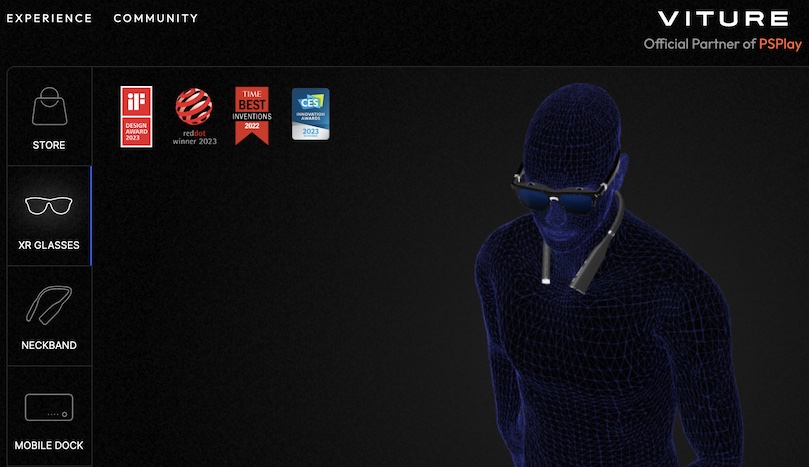
This fellow enthusiast graciously shared a quick review of their daily use, even taking the time to address my specific queries. It didn’t take long for me to become captivated by the possibilities these glasses offered. What’s more, the prospect of having them delivered to Barcelona, Spain, without the hassle of customs clearance was an unexpected bonus.
However, as I dug deeper into VITURE, something seemed amiss. Although they presented themselves as an American company, all signs pointed to shipping and deliveries originating straight from China. This raised a few concerns, but my curiosity led me to explore their website. I was met with a sleek, modern design that exuded marketing finesse and functional elegance.
Yet, questions lingered. Shipping costs were a bit of a mystery; only by proceeding through the checkout process could you obtain a quote. In my case, the cost tallied up to $25, but the shipping method remained undisclosed. The customs aspect was even more perplexing. At checkout, there was no indication of customs or tax data, leaving me to wonder how this would play out when the package came all the way from China.
In light of these uncertainties, I decided to streamline my purchase. I removed extras like adaptors and neckband + case from my cart and opted to test the waters with just the glasses and a $10 plastic cover (though, why isn’t it included with the glasses, I wonder?). My decision was to evaluate the entire shipping and delivery process and the quality of the glasses before fully immersing myself in the VITURE ecosystem.
Upon completing the payment in American dollars, the transaction was seamless. Checking my online bank, I discovered the merchant’s name as “Sp Helloviture” However, my concerns about customs still lingered, so I turned to their DISCORD group, where numerous European buyers were echoing my questions about customs. Some shared that they had avoided customs fees, while others warned of potential costs, including taxes and processing fees.
Fuelled by this information, I scoured the VITURE website once more and, after ten minutes of diligent searching, I stumbled upon a buried page that addressed shipping and customs. Oddly enough, they explicitly disclaimed any responsibility for customs-related matters. The elusive information could be found under the “International” section of their website.
VITURE promised a shipping time of up to 18 days, which seemed reasonable. In my experience, they delivered within 15 days, though not without some “exciting” twists.
As the waiting game commenced, an email notification arrived mere hours after checkout, informing me that my product had shipped and was en route. This rapid progress caught me off guard, as I had anticipated a lengthier delay.
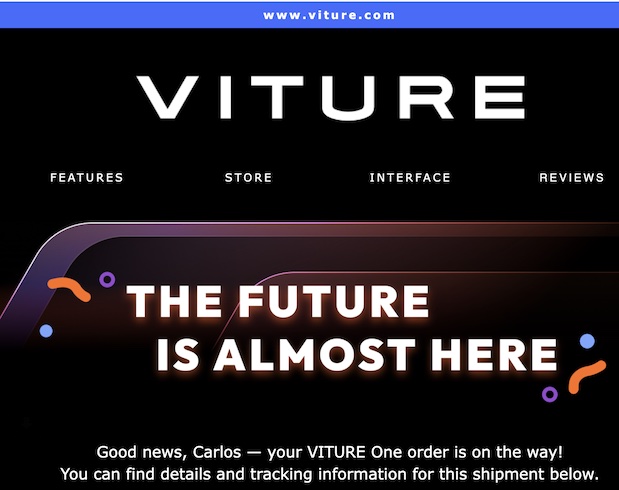
However, when the tracking number finally arrived and I checked it online, my excitement turned to disappointment. Contrary to the notification, the item hadn’t actually shipped for three days, and it was dispatched with YANWEN, a budget Chinese bulk shipper typically associated with low-cost AliExpress items, not a product worth 400€. My apprehension intensified when I discovered that the “last mile” delivery in Barcelona was entrusted to the infamous Ecoscooting, known for vanishing parcels and poor customer support. This was the same delivery company used for extremely cheap AliExpress items, making me seriously question my impulsive purchase. The customs issue loomed large, and I began to regret my decision, though I consoled myself with the thought that, at worst, I’d be out 400€.
Throughout this ordeal, the tracking information was delayed and frequently incomplete, with updates sometimes taking as long as four days. Then, one day, it finally changed to “out for delivery.” I breathed a sigh of relief when I received the package late in the afternoon, and it was a big blue box, bearing the promise of VITURE within.
In the end, it took approximately 15 days from the moment I checked out on the VITURE website to receive the eagerly awaited package.
Unboxing VITURE XR: From Excitement to Disappointment
When that sizeable blue box arrives, boldly declaring its presence, anticipation courses through you. You hope to be pleasantly surprised, and the opening act is nothing short of intriguing.
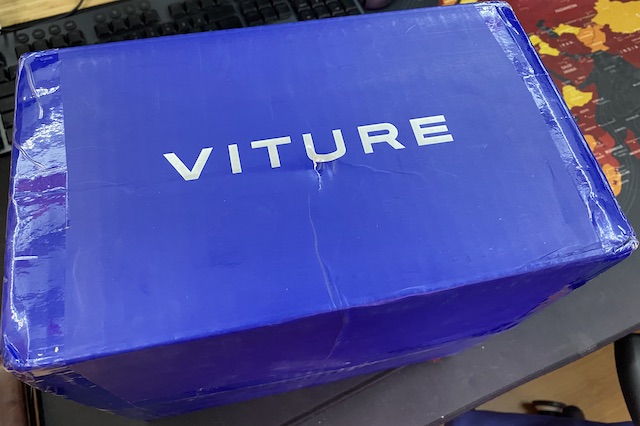
FUTURE! I.AM VITURE!


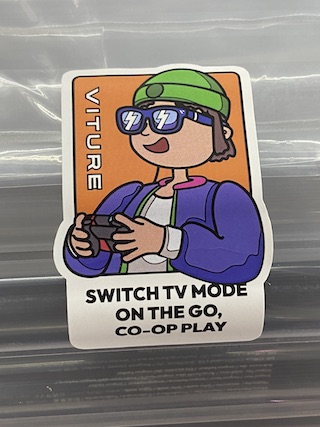
Within the blue box lies another box, meticulously packaged with what seems like enough cushioning to withstand an earthquake—a thoughtful touch that deserves applause!
My shipment included two items: the glasses housed in an imposing black box and the plastic shades, modestly packed in a small box (yes, I did pay for a piece of plastic). The glasses’ box makes a bold statement, hinting at the grand unveiling awaiting within.
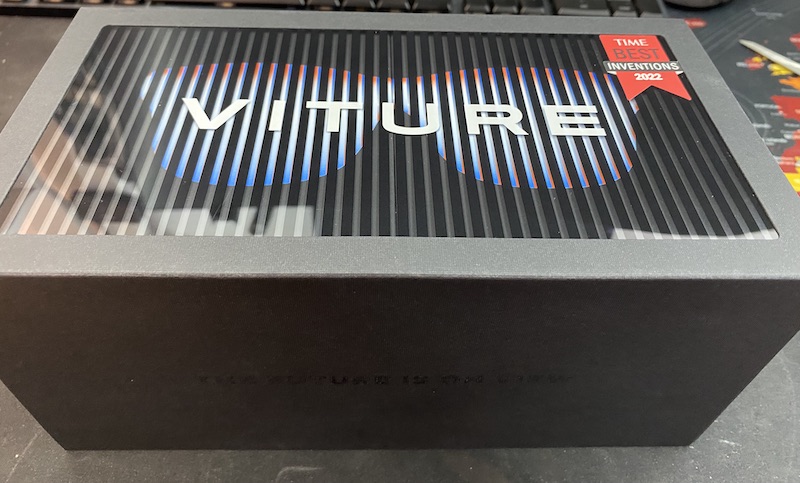

As you slide off the external shell and peel away a solitary sticker, it hits you—kudos to the genius behind this packaging design! This is no ordinary unboxing experience; it unfolds like a high-end Swiss watch box, with vibrant orange accents that elevate your emotions from “this is new tech” to “this is a luxurious glimpse into the future, making me feel exceptional and unique.” Bravo!
With each layer of wrapping, you reach the pièce de résistance: a pill-shaped carry case that neatly cradles the USBC-2-pogo cable and the impeccably designed glasses. Those striking orange accents once again leave their mark—a visual feast!

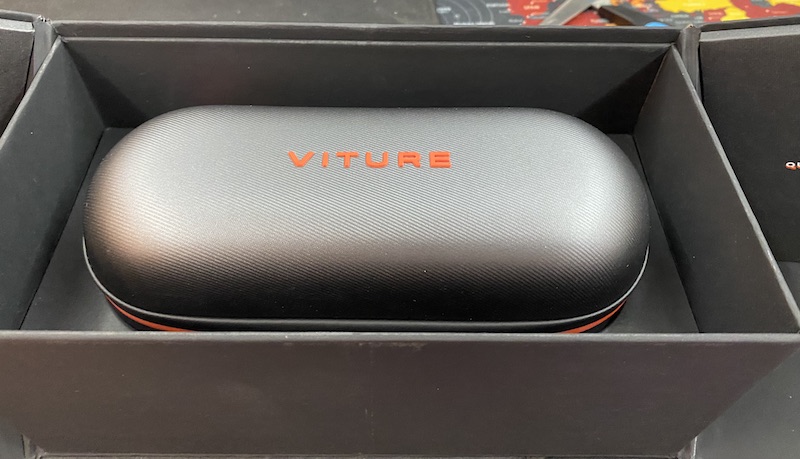

When you finally hold the glasses and unfold them, you sense you’re cradling a magical device, a constant companion akin to your smartphone. The adventures ahead and the countless hours of private delight awaiting you make all previous anxieties fade into insignificance. It’s a feeling that screams, “This was so worth it!“
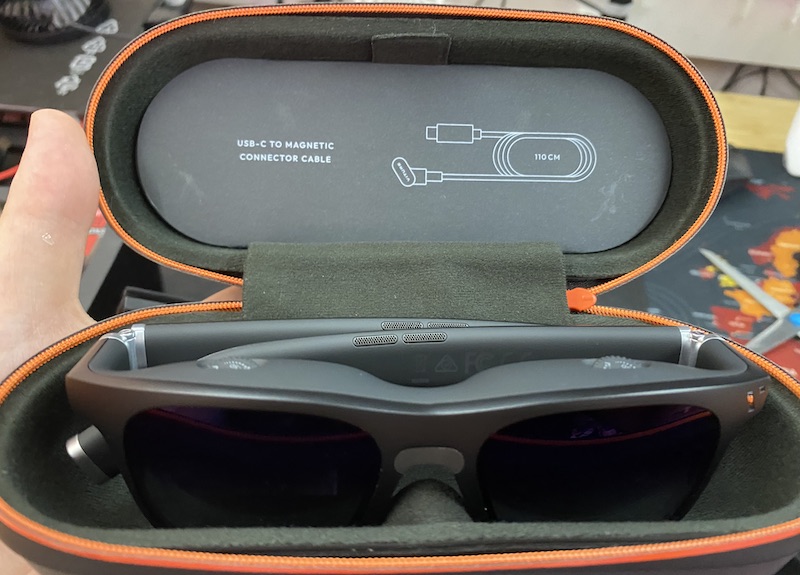
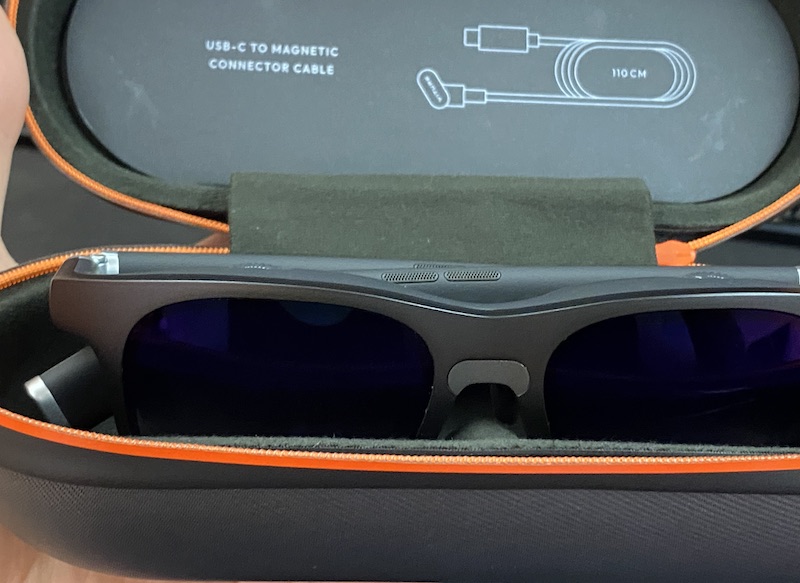
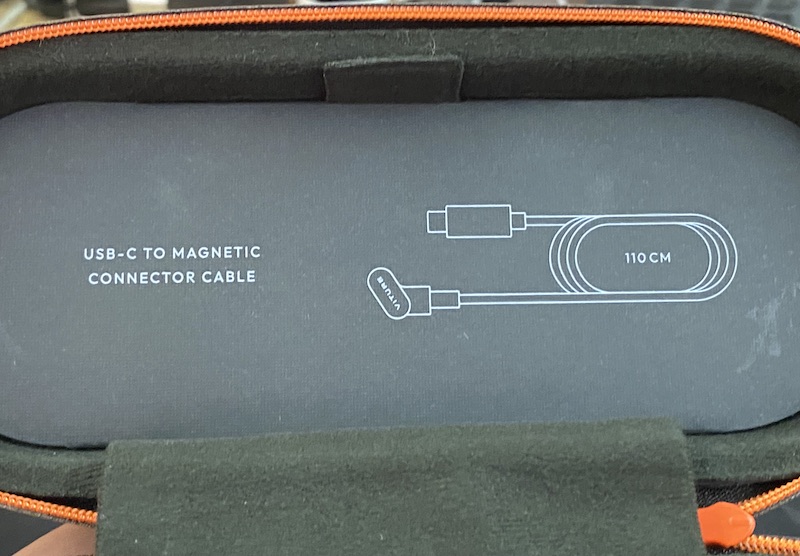
The packaging achieves a level of enchantment reminiscent of an Apple experience. In fact, it’s so enchanting that you may find yourself keeping the box within arm’s reach, occasionally opening it just to relive the moment.
This is the moment I’ve been waiting for—a 14-year journey that feels almost like a religious experience. Finally, it’s here, and you can’t help but exclaim, “Hell yeah, let’s goooooooo!“
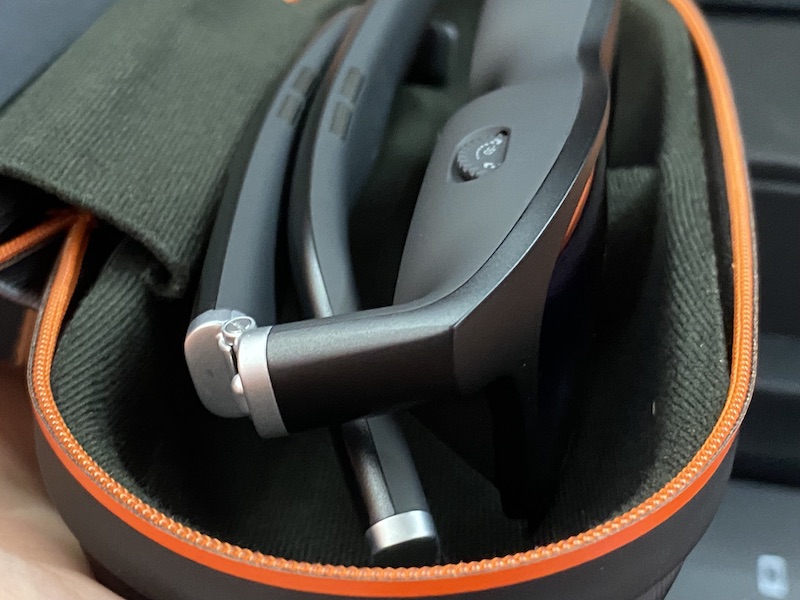
Sleek industrial design!
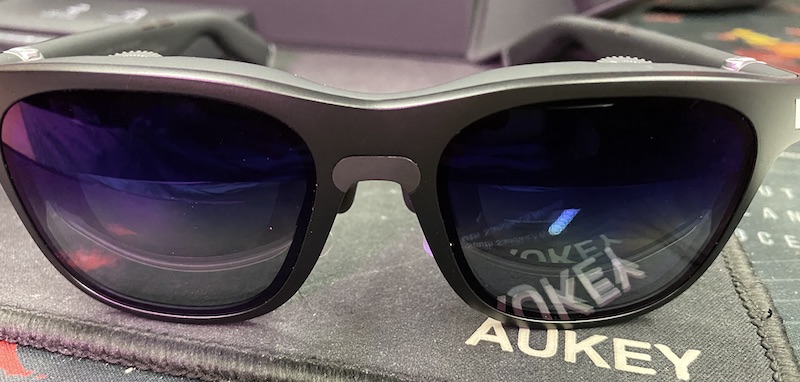

However, no amount of marketing, packaging, or emotional hype can mask the ultimate litmus test: how well the device performs and whether it lives up to the customer’s expectations. Sadly, in my case, this is where the downhill journey begins.
The VITURE XR Experience: A Technical Odyssey Marred by Issues
Let’s dive into the heart of the matter – the VITURE glasses, touted as a groundbreaking piece of technology. These glasses boast tiny micro-OLED displays capable of delivering Full-HD (1920x1080p) visuals at 60fps, complete with moderate vibrant colours.
For those with just the glasses and no extras like a neckband, control is limited to adjusting the volume, which disappointingly falls short in both loudness and quality and the glasses’ brightness which can be lacking, depending on how bright your environment is. A third button is supposed to offer various functions, including turning on/off the LCD shades, switching between volume & brightness and enabling 3D mode, though, in my experience, the latter feature has never functioned, regardless of different combinations and devices.
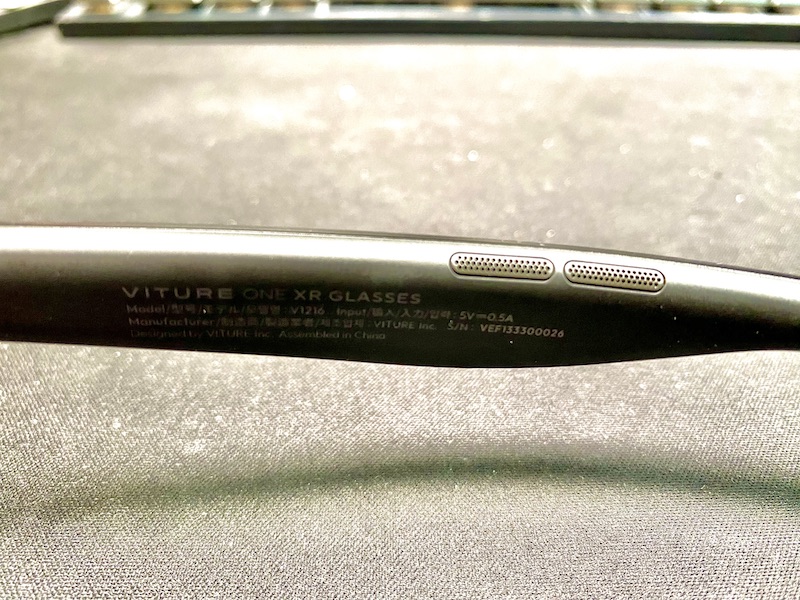
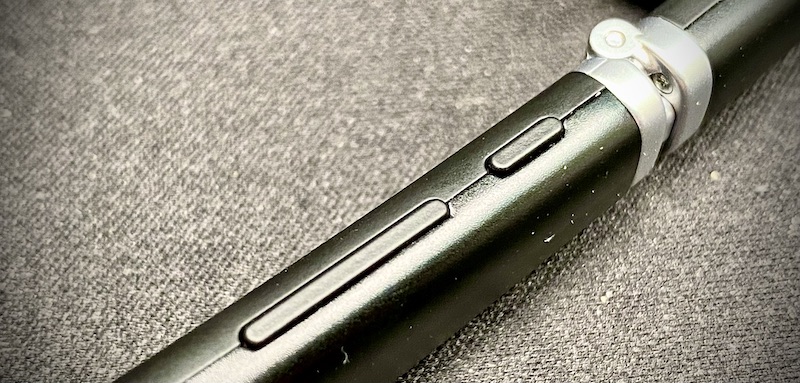
Before I get into the technical/quality issues I’ve encountered with my VITURE glasses, it’s essential to clarify that I’m genuinely enthusiastic about this technology. I want to embrace it, and I wholeheartedly wish for VITURE‘s success so that I can enjoy this technology and its future iterations for years to come.
Having a background in VR glasses and an understanding of this technology, I can confidently say that my current VR glasses, the PICO4, provide a mostly flawless experience for both VR and watching movies (+3D) or series. The image quality is great, with most of the screen in sharp focus (only edges get distorted which is expected for pancake lenses). However, my experience with VITURE has been quite the opposite, raising concerns that perhaps I received a defective pair (?). I genuinely hope this is the case, and I intend to reach out to VITURE to explore possible solutions while documenting the entire interaction in this article.
Now, let’s begin the journey through the VITURE glasses’ usage and the issues I’ve encountered. Some problems I managed to partially overcome, while others remain insurmountable.
My initial endeavour was to adjust the top diopter dials to suit my eyesight, but perfection was elusive, primarily due to the absence of IPD (Inter-Pupillary Distance) adjustment—an essential feature for optimal viewing comfort and quality. The inability to fine-tune this parameter left the glasses far from ideal.
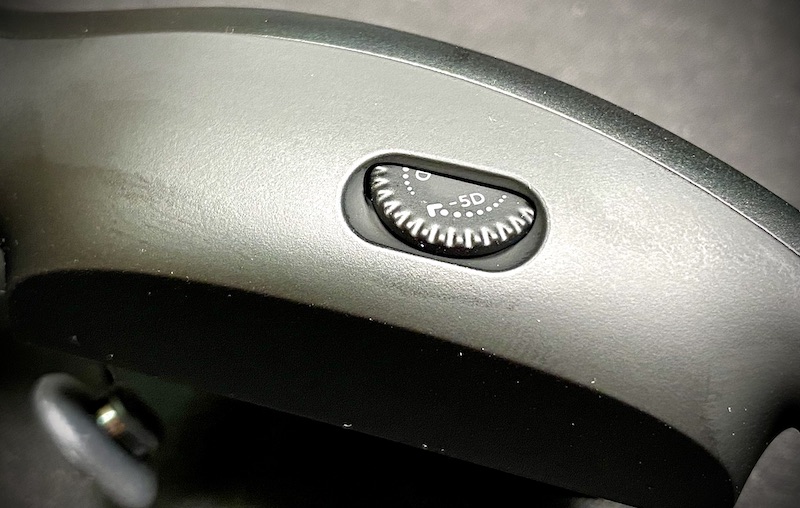
My facial features are caucasian average, and my nose falls on the smaller side. When I tried the glasses with the installed nosepad, they felt uncomfortable, and the image quality suffered. I attempted many different adjustments but the glasses’ positioning left me with an odd view: I could see either the top or bottom of the screen, but not both simultaneously. It seemed like the field of view of the mirrors was too narrow, disrupting the magical unboxing experience.
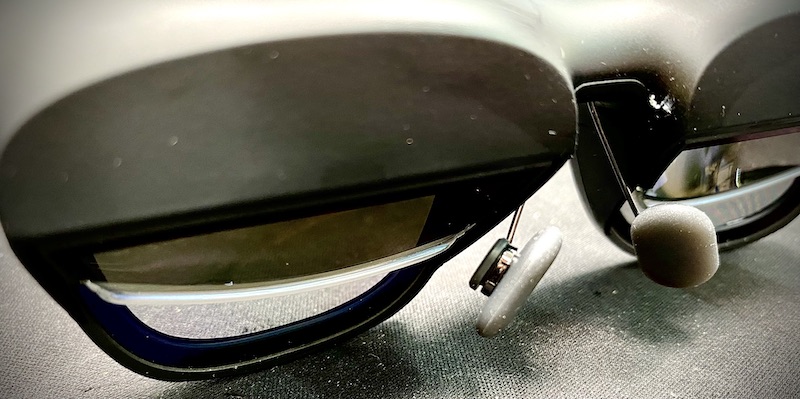
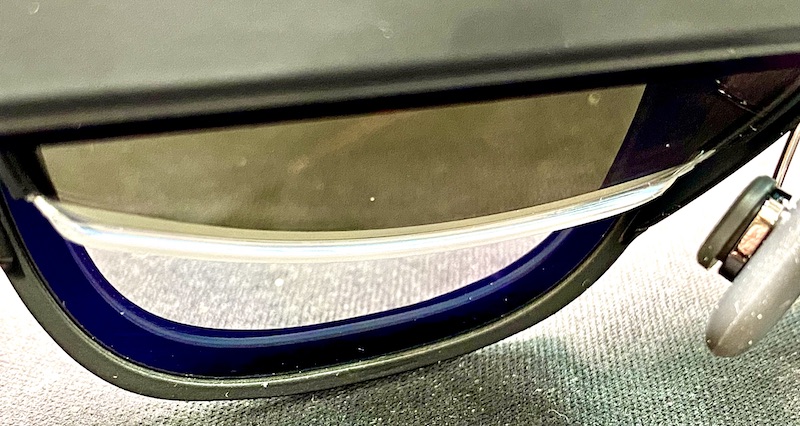
Experimentation with the other provided nosepads only exacerbated the problem. Ultimately, I settled for the smallest one, which allowed me to position the glasses closer to my eyebrows, improving image quality and barely revealing the bottom part of the screen. However, this arrangement remained uncomfortable as my eyelashes grazed the glasses’ frame.
Further adjustments were made by adapting the smallest nosepad with bluetack, painstakingly moulding it, iteration after iteration, to my face and nose’s shape for optimal screen positioning. Even so, the top half of the screen remained sharp, while the lower part grew increasingly out of focus. This proved uncomfortable but was part of my quest to find a solution for better image quality and overall experience.

Shifting the glasses farther from my face eliminated either the upper or lower part of the screen from view, necessitating the use of different nosepads, but to no avail.
Bluetack manipulations led me to try bending into shape the largest nosepad which finally, after multiple adjustments, allowed me to forgo the “ugly Bluetack nosepad” but still failed to address image quality issues, ultimately sparking an examination of the glasses’ internal structure.
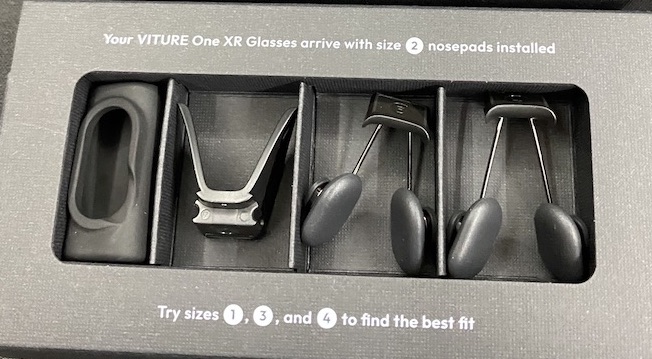
The glasses comprise 2 tiny microOLED screens projected onto curved translucent mirrors, reflecting light back to your eyes while allowing some ambient light to pass through. This combination creates a composite of the real world and the OLED screen, tricking your brain into perceiving the screen as a massive 120-inch display. This illusion hinges on the brain’s fusion of the two images (real world + OLED) based on the distance between you and the real-world background. However, this trickery collapses when the background disappears, such as in a dark environment or when using the plastic shades to block external light. In such situations, your brain recognises the OLED image as tiny, centred in your field of view and moving with your gaze. For some, this discrepancy between your senses and what your brain expects may induce dizziness and discomfort, which can be mitigated with training to ignore the inconsistency.

The design of the curved translucent mirror leaves room for speculation. It could have been more advantageous if it were larger, fitting into a broader field of view. The narrow height of the mirror is especially puzzling, making it challenging to view the entire image from top to bottom. The distortion at the edges and corners of the projected image is expected due to the mirror’s shape, but it raises questions about potential mirror defects or misalignment in my unit.


Turning to the microOLED screens’ quality, my disappointment deepened when I noticed clusters of burned-out pixels on both screens, with one forming an inverted L shape. I initially considered the possibility of external dirt affecting the screens but found no evidence even under a 20x magnification. Cleaning the glasses with specialised wipes (ZEISS) yielded no improvement, and the burned pixels persisted on the top half of the screen as the bottom half is progressively blurred so no chance to see if there are more burned pixels.
As I proceeded with my technical analysis, I longed for redemption, searching for any aspect that could salvage the VITURE glasses, despite increasingly slim odds. I experimented with the glasses’ built-in speakers, which, as expected, produced tinny sound quality. Worse, the volume was disappointingly low, even at maximum source volume. The marketing claims of “amazing super duper speakers” proved hollow. Earbuds remained the superior audio option, except perhaps in a quiet room where you can tolerate the tinny, muffled sound for some irrelevant media.
The three-button control system on the VITURE glasses, though packed with functions, proved unintuitive. To navigate successfully, one must commit various button combinations to memory. For instance:
- A single short press toggles the LCD shades on/off.
- Two short presses alternate between brightness and volume modes.
- A long press toggles between 2D and 3D (with a very notable delay in response).
During intense moments, it’s easy to forget whether you’re in brightness or volume mode. The potential for accidental presses leading to unintended actions complicates the experience especially when you’re gaming online, decide to turn on the shades but end up turning on 3D mode, having to wait an eternity in front of a black screen and then having to wait another eternity while backing out of this mistake…
I had high hopes for 3D functionality, being an avid viewer of 3D movies on my PICO4. Unfortunately, despite numerous attempts on different devices and platforms, I could never get 3D to work. Its functionality remained elusive, leaving me unable to assess its quality.
One must also contend with light bleeding into the image. In certain conditions, you may see your reflection sharply superimposed (like the top part of your shirt) on the image or video you’re watching, especially in dim scenes. This occurs because the curved translucent mirrors reflect external light when it’s abundant. The only recourse is to use the glasses in a very dark environment (so no reflections) or with predominantly bright content (which will overpower the reflection). Some users may adapt to this quirk over time as their brains filter out the reflection.
I attempted to use the VITURE glasses with a MacBook Pro M1-MAX for work and productivity, but the setup proved nightmarish, likely due to compatibility issues between the M1 and the glasses. Even if these issues were resolved, the image quality remained inadequate, rendering the endeavour futile.
Speaking of comfort, the VITURE glasses didn’t fare well for extended sessions of over an hour. The stems of the glasses, just before their curvature, dug into the top part of my ears, creating discomfort and a noticeable dip.
There were some positive aspects, such as seamless integration with the S10+ and its DeX environment. The glasses performed admirably, enabling movie playback through software like VLC and online gaming via Xbox Cloud with a connected Xbox controller. The experience was smooth, and the S10+ battery drain was surprisingly slow, offering (a projected figure of) at least six hours of continuous play on a full charge. One can only imagine the neckband would replace the S10+, making it an even more portable solution, although I didn’t have one to test.
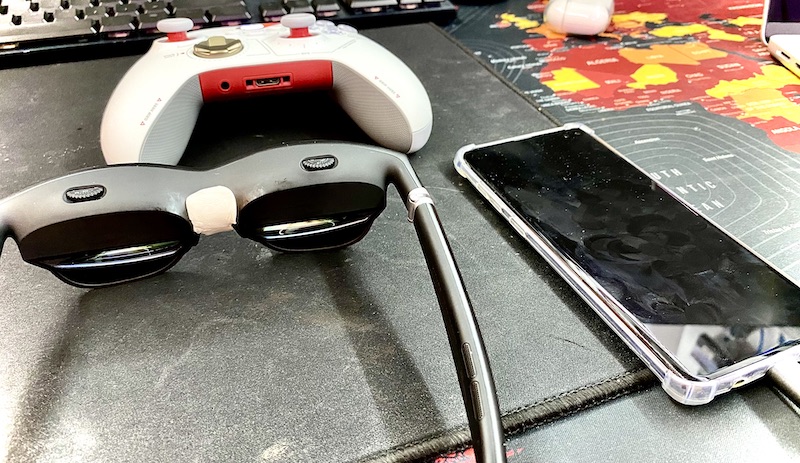
I eagerly anticipated using the VITURE glasses for playing Xbox Cloud, and native on-device games on my ASUS ROG ALLY. The glasses worked seamlessly with the ALLY, instantly switching to Full-HD resolution at a fixed 60fps. STARFIELD ran great, with no noticeable frame rate issues like stuttering or tearing when running sub 60 and as low as 29 fps which is fantastic. However, visual defects and discomfort greatly marred the experience. Text and icons at the screen’s bottom part were very challenging to read.
Please be advised that on a fully charged ALLY (100%) the maximum STARFIELD playtime will hover around 1-1.5 hours so you’ll need to purchase the “USB-C to Glasses & Charging adapter” to extend playtime beyond that. Sadly I can’t tell you how this adapter will perform with real world tests on the ALLY as I don’t have it.
My once-luxurious unboxing experience had now transformed into regret, prompting me to pen this technical article. I hope it serves as an honest, unpaid real-world review for potential AR glasses customers.
I don’t know if the neckband and/or other VITURE devices would’ve improved my experience as I only got the glasses + plastic shades as an initial trial to see how they would fare and if the experience was positive then I would buy the rest of their ecosystem like the neckband, neckband carrying/charging case, adapters for iPhone/hdmi, usb-c to glasses & charger, but after all the serious issues I’ve encountered, I’m somewhat relieved that I didn’t invest more heavily in the VITURE ecosystem all at once as my first cart included all the aforementioned products but after some pondering I removed all except the glasses and plastic shades.
As I write this article, I have no other AR glasses brands for comparison like X-REAL or ROKID, which leads me to my next step: contacting VITURE support. I intend to document the entire process as it unfolds. How responsive will VITURE support be? Will they acknowledge defects and initiate an RMA process? Or will they opt for a refund? What will the return experience entail? Are there any associated costs? How long will it take to resolve this matter?
I conclude this article on a positive note, expressing my appreciation for VITURE’s employees for their dedication in designing and bringing to market a complex piece of bleeding-edge technology. I genuinely hope they succeed and will be on the lookout to try their future iterations.
Thank you for taking the time to read my VITURE glasses experience. I encourage you to revisit this article for updates on VITURE‘s response and their handling of my case.

Hey!
I was checking out this brand compared to the rokids when I stumbled upon your review which I find very interesting.
I’ll hold my purchase decision and regularly check out your article here to know how this will play out to see if it’s a good brand.
I’m also interested in the neckband & case and would love your input so it’s a pity you didn’t get to test other devices of their ecosystem.
Please keep us updated regularly and let us know how it goes.
Apologies for the late reply .
I contacted VITURE yesterday afternoon (my time) and they kindly replied a few hours later.
They will send a replacement unit for me to test so I’ll let you know (and everyone else) how it goes.
Hopefully everything will work out and I’ll be able to enjoy a flawless experience 🙂
Keep checking the article for updates!
Thank you for your time Josh!